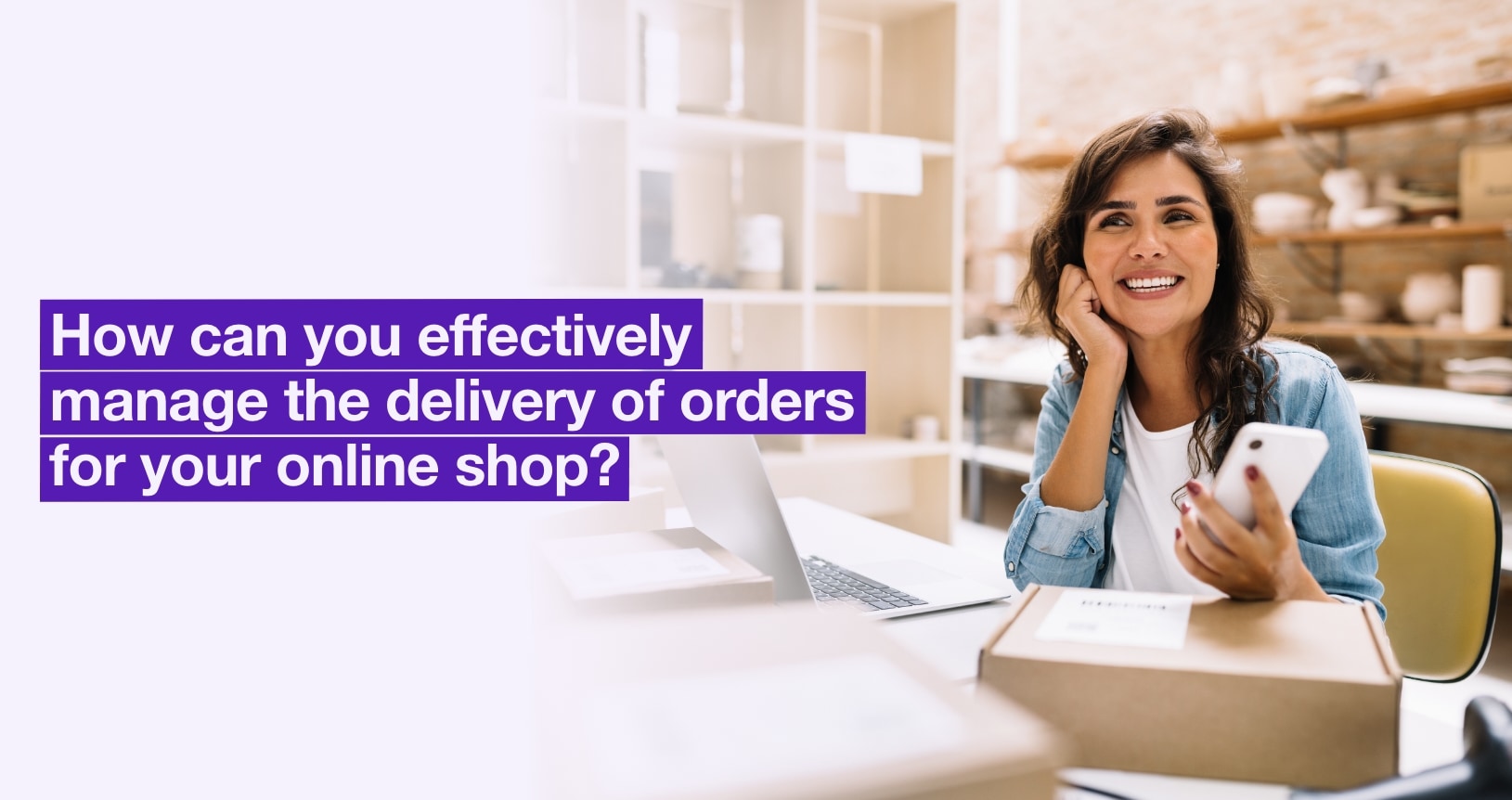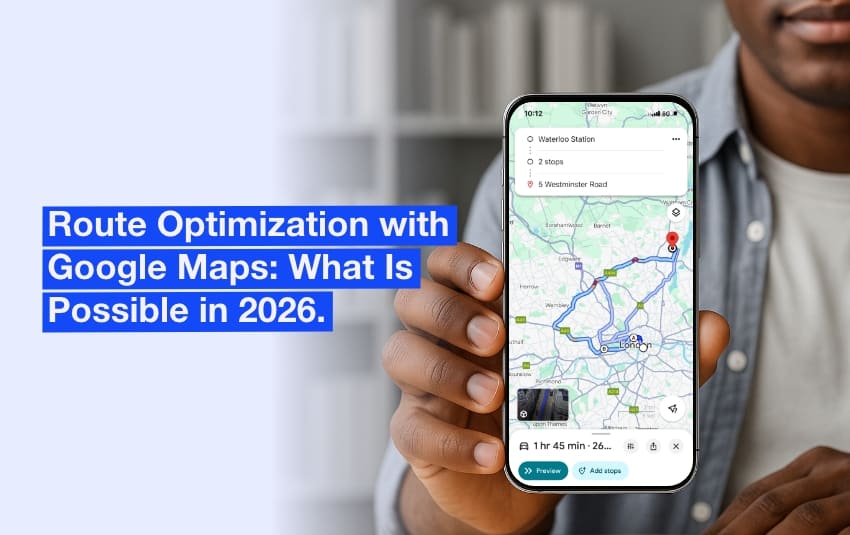How can you effectively manage the delivery of orders for your online shop?
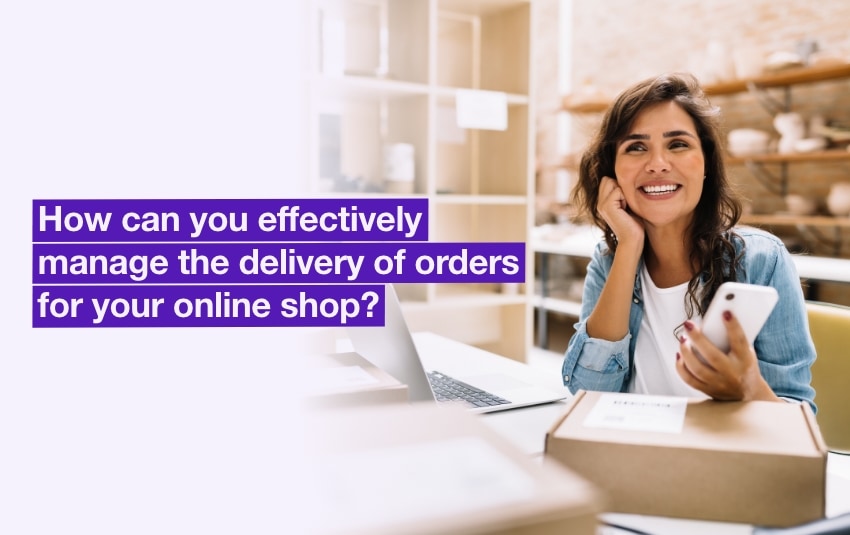
Delivery is much more than simply moving products from point A to point B; it’s at the heart of the customer experience. From storage management to packaging, route optimisation and returns management, every detail counts. Ineffective management can not only cause delays, it can also lead to customer frustration and damage your brand image.
In this guide, we take you through the key steps involved in organising the delivery of orders for your shop or online shop. Properly structured management can turn your logistics into a real asset, with benefits such as:
- Increased efficiency
- A clear view of areas for improvement
- Fewer errors
- Better anticipation of requirements to avoid stock-outs or surplus stock
- Optimised budget management
- More satisfied customers, ready to come back
Efficient delivery management guarantees the success of orders for an online shop. For the shop manager, it means greater profitability and happier customers.
Discover all the steps!
- Storage and order picking
- Packaging: security and customisation
- Labelling and documentation
- Loading and optimisation of vehicles
- Types of transport and delivery to be offered
- Calculating delivery costs
- Keeping customers updated and geotracking of orders
- Returns management
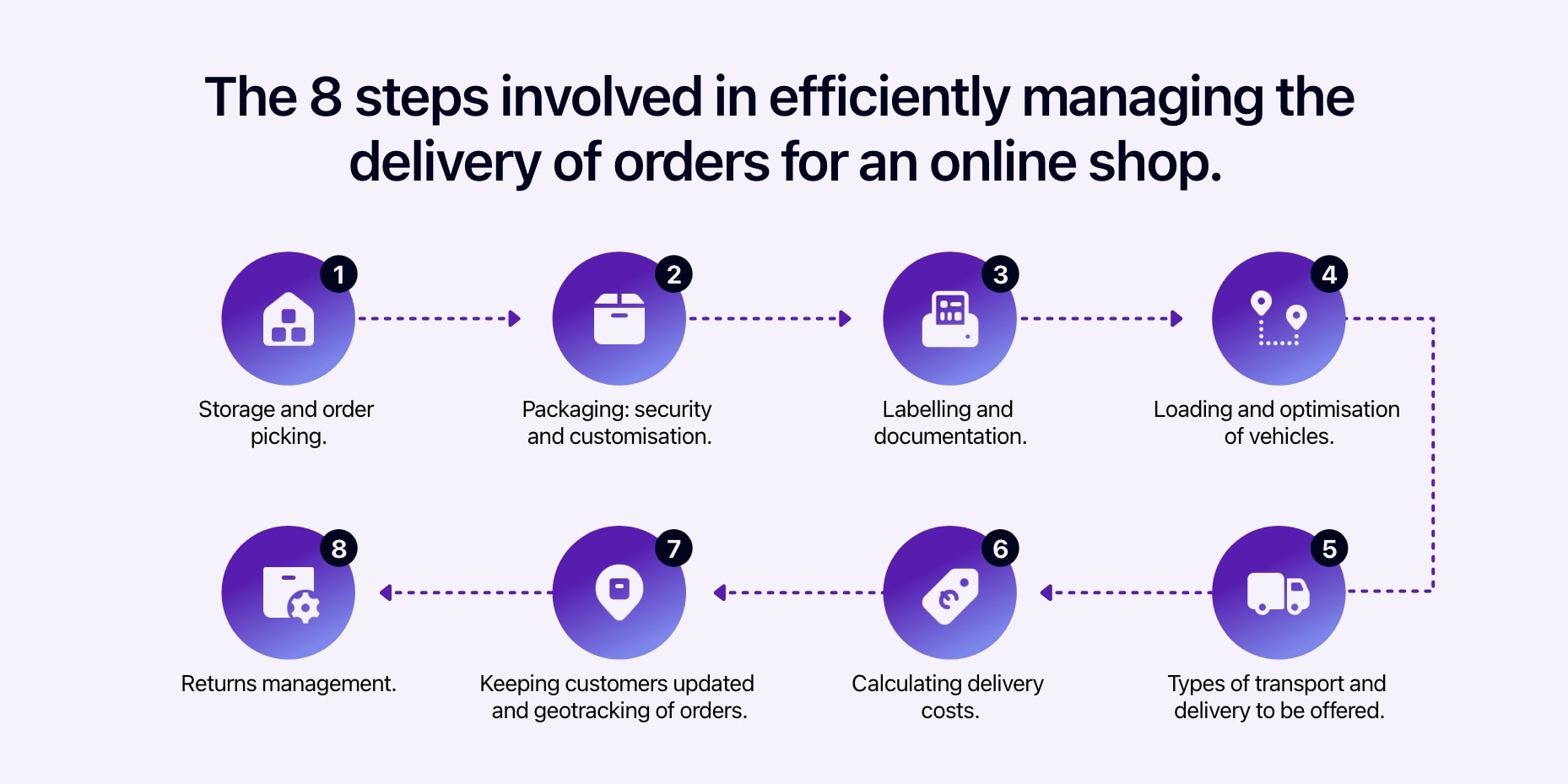
The 8 steps involved in efficiently managing the delivery of orders for an online shop.
1. Storage and order picking
Organisation of storage
The management of orders starts way before the customer makes a purchase: it begins with rigorous stock control. You need to know exactly what products are available to guarantee smooth orders and fast deliveries. By regularly monitoring stocks, you can ensure that items are always ready for dispatch.
Once this solid foundation has been laid, it’s time to concentrate on organising your storage space. A well-organised warehouse doesn’t just reduce order-picking time; it transforms your entire logistics. By classifying products by category, size or frequency of purchase, and ensuring that the most popular items are easily accessible, you not only improve the efficiency of your operations but also the overall customer experience.
Order picking
The preparation or picking phase consists of putting together the items ordered by the customer. An efficient process is essential to minimise errors and speed up the procedure.

Efficient order picking minimises errors and speeds up delivery.
2. Packaging: security and customisation
Choice of packaging materials
Packaging is a key stage that strongly influences the customer experience. It’s not just about protecting the products, but also about reflecting the care you take with each order. Nothing damages your brand more than sending the wrong item or, worse still, damaged products.
As well as its protective function, packaging is also a powerful way of conveying your brand’s image. At a time when consumers are increasingly concerned about environmental issues, choosing sustainable materials and formats adapted to products can reduce the carbon footprint of deliveries while optimising logistics costs.
Tailor-made packaging is not only eco-friendly, it’s also more cost-effective. Think of the savings you can make by improving your logistics: less space taken up in the warehouse, reduced shipping costs thanks to optimised weight and dimensions, and more efficient transport.
Customised packaging
Packaging is an excellent way of reinforcing your brand. A personal touch, such as a message of thanks or a prominent logo, can make all the difference. It shows your customers that you value every order.
3. Labelling and documentation
Label printing
Accurate and compliant labelling is essential to avoid delivery errors. Make sure the information is clear and legible, including the delivery address, the contents of the parcel and the barcodes. Good labelling ensures that every parcel reaches its destination without a hitch.
Documentation management
Documentation, such as invoices and delivery notes, should accompany each consignment to ensure that the package can be tracked and to make it easier to manage returns.
4. Loading and optimisation of vehicles
Loading organisation
A well-organised loading enables you to optimise the space available in the vehicles and protect the goods during transport. Place parcels strategically, taking into account their fragility and the order of delivery, to avoid damage and make unloading easier.
Route optimisation
To save time and fuel, route optimisation is essential. Use route planning software, such as AntsRoute, to determine the shortest and fastest routes. And good news: our software integrates perfectly with WooCommerce, Odoo and PrestaShop, giving you a complete solution for managing your deliveries efficiently.
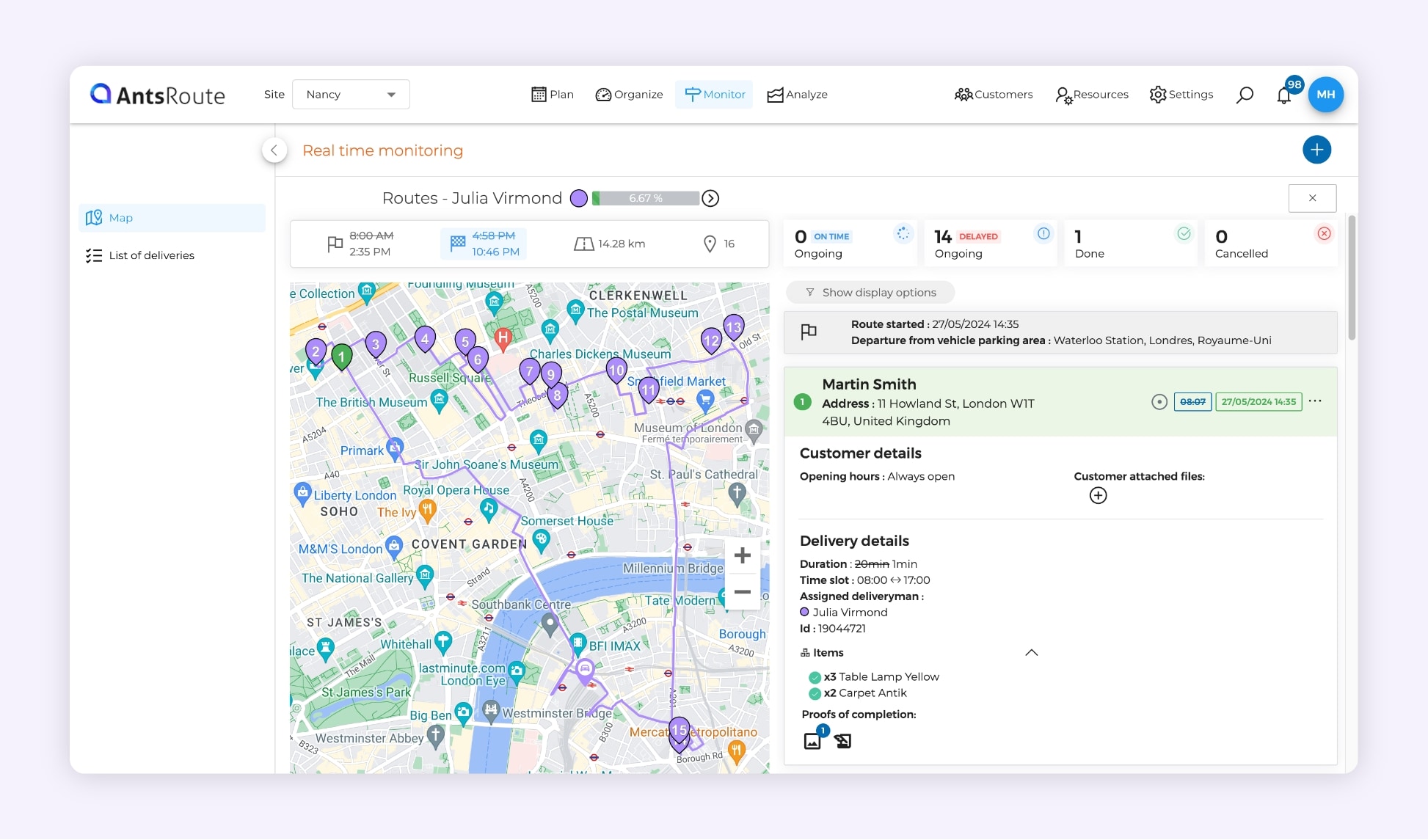
AntsRoute delivery route optimisation software.
5. Types of transport and delivery to be offered
Choosing the right carrier
Your choice of carrier depends on the nature of your products. Opt for a service that offers a full range of solutions: delivery by bicycle, car, truck, and above all delivery to a relay point, which is becoming increasingly popular with consumers.
To get the most out of your investment, carry out a market survey and compare offers from different service providers. By putting them in competition with each other, you may be able to get better rates. Make sure that every stage of the delivery process is respected, and check for additional options such as real-time tracking or hand-delivery, not forgetting to check their costs.
The different delivery methods
Many shoppers abandon their shopping baskets when delivery options are limited. Adapt your solutions to your customers’ preferences rather than imposing a single delivery method. Here are a few options to consider:
- Standard delivery: An economical option for customers who are not in a hurry to receive their order, with service providers such as, DHL, UPS, FedEx, etc.
- Express delivery: For buyers who want to receive their products quickly.
- Lockers: Additional flexibility for your customers who prefer to collect their order close to their home or workplace.
- International delivery: If you ship abroad, find out about customs regulations and additional costs to avoid unpleasant surprises.
By diversifying your delivery options, you can reduce the rate of abandoned shopping baskets.

Diversifying delivery options helps to reduce shopping basket abandonment rates.
6. Calculating delivery costs
Calculation method
Once you’ve selected your packaging and carrier, calculating the shipping costs is important, as it affects the final price of your products and the delivery options on offer.
Here’s what you need to consider:
- Packaging characteristics: Weight, size and material used.
- Shipping areas: Consider distances and destinations.
- Delivery tracking: A valuable option, if available.
- Insurance: To ensure the parcel arrives in good condition.
- Product price: Direct influence on profitability.
Don’t forget to include customs duties (if applicable), whether payable by you or the customer.
Strategies to reduce costs
To attract more customers, consider offering free delivery on purchases over a certain amount or offering a fixed price. Many businesses adopt a fixed price, usually between €3 and €5, to attract customers. Buyers of a single product may find this option slightly disadvantageous, while those who buy several items benefit from a better deal on delivery costs. This method helps to balance your margins.
These strategies can encourage impulse buying and increase the average value of your shopping baskets.
7. Keeping customers updated and geotracking of orders
Communication with customers
Nothing is more frustrating for a customer than not knowing the status of their order. To reassure them and help them wait, it’s important to keep them regularly informed about the progress of their order.
Here are the steps for the best possible tracking:
- Order confirmation: Send an e-mail containing the invoice and an order confirmation, allowing the customer to check product details and delivery information.
- Dispatch notification: Notify customers by e-mail when the carrier has picked up their parcel.
- Real-time tracking: Offer customers the option of tracking the progress of their order online, either via the carrier’s platform or from their customer account.
- Delivery confirmation: Send an e-mail to confirm delivery of the parcel and offer a satisfaction survey if required.
By integrating e-mail and SMS notifications, you can ensure transparent tracking, boosting customer confidence and reducing the need for after-sales service. Even better, by opting for delivery solutions offering automated alerts, you can simplify the management of tracking information while remaining responsive to customer queries.
Geotracking
Order tracking enables customers to know the precise location of their parcel and informs them in the event of delays. To achieve this, it is essential to have real-time information on the status of deliveries. This not only reassures customers, but also improves wait management and minimises frustration.
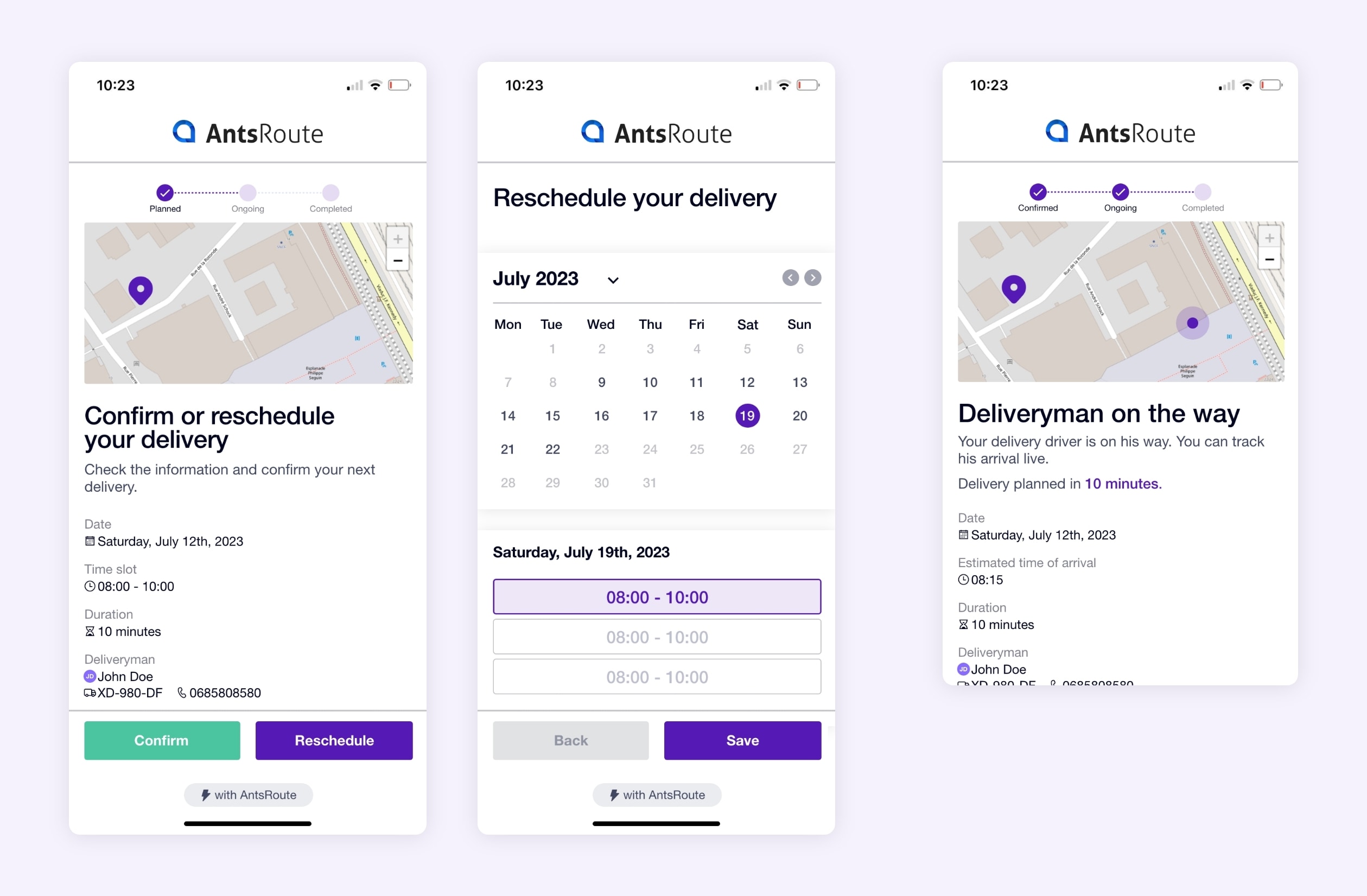
The system of links sent from AntsRoute enables end customers to be informed about their orders.
8. Returns management
Returns are an inevitable part of your online business. So, why not make this process more efficient?
A simplified and transparent returns process can make all the difference: it reduces basket abandonment and strengthens customer loyalty.
To make returns as smooth as possible, here are a few key steps:
- Clear returns policy: Define precise returns conditions and clearly defined deadlines. Customers appreciate knowing exactly what they can expect, which makes returns management easier for you and reduces unpleasant surprises.
- Returns label included: Provide a returns label with every order. Not only does this simplify the process for your customers, it also reduces the workload for your customer service department.
- Automated returns portal: If the returns label is not included, integrate an online returns portal to automate returns requests and manage exchanges. This reduces the administrative burden and speeds up returns processing.
- Efficient reverse logistics: Set up a robust system to manage returned items. Inspect products, decide if they can be resold and prepare them for a new sale.
Returns can sometimes be frustrating, particularly because of high fees or complicated procedures. More than half of consumers check return policies before finalising a purchase. A user-friendly policy is therefore essential not only to satisfy your current customers, but also to encourage future purchases.
As e-commerce continues to expand, managing last-mile delivery is becoming a key success factor. The challenge is to optimise delivery methods while balancing cost and speed. By simplifying this process, you not only improve logistics efficiency but also customer satisfaction. AntsRoute is your partner for making every delivery smooth and successful, strengthening your position in the market.
Take advantage of our software now! A 7-day trial period is available!
WRITTEN BY
Florine Martin
Florine has been a freelance web copywriter since 2021, writing for a variety of clients in a range of sectors. Since the beginning of 2024, she has been writing articles about logistics for our company, AntsRoute.
Free 7-day trial | No credit card required
Contenu
- 1. Storage and order picking
- Organisation of storage
- Order picking
- 2. Packaging: security and customisation
- Choice of packaging materials
- Customised packaging
- 3. Labelling and documentation
- Label printing
- Documentation management
- 4. Loading and optimisation of vehicles
- Loading organisation
- Route optimisation
- 5. Types of transport and delivery to be offered
- Choosing the right carrier
- The different delivery methods
- 6. Calculating delivery costs
- Calculation method
- Strategies to reduce costs
- 7. Keeping customers updated and geotracking of orders
- Communication with customers
- Geotracking
- 8. Returns management


